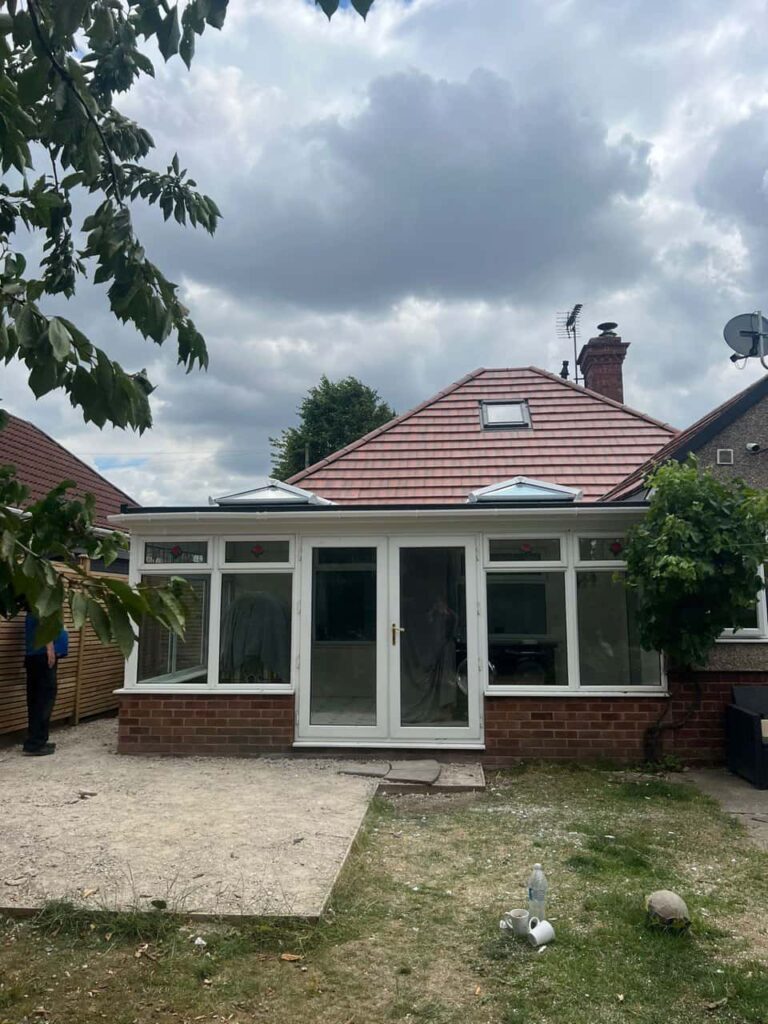Felt roofing is a popular and cost-effective choice for many homes and commercial properties, offering flexibility and protection from the elements. However, like any roofing material, felt can wear over time, particularly in areas prone to heavy rain or temperature fluctuations. Reinforcing felt roofing can significantly extend its lifespan, making it more resilient and reducing the likelihood of repairs. At Cannock Roofing Repairs, we provide expert roofing services across Cannock, Staffordshire, with techniques designed to increase the durability of felt roofs. Here’s a guide to how reinforcing felt roofing can help improve durability.
1. Regular Inspection and Maintenance
One of the most effective ways to reinforce felt roofing is to keep up with regular inspections and maintenance. Over time, felt can become susceptible to cracks, tears, and other forms of wear due to weather exposure. By scheduling regular checks, minor issues can be detected early and repaired before they become more serious. A professional roofing inspection will help identify potential weak points and keep the felt roofing in peak condition.
Small cracks or punctures in the felt can often be patched up with high-quality roofing adhesive, preventing moisture from entering the roof structure. Routine maintenance is a straightforward yet essential step in reinforcing a felt roof and ensuring its longevity.
2. Applying a Bitumen Coating
A bitumen coating is a popular method for reinforcing felt roofing and enhancing its waterproofing abilities. Bitumen is a durable, weather-resistant material that bonds well with felt and provides an extra layer of protection against the elements. Applying a bitumen coating can help to seal any minor imperfections in the felt, creating a smooth surface that resists water ingress and prevents damage from UV exposure.
For maximum effect, consider adding a reflective top layer to the bitumen coating, which can protect the roof against heat and prolong the felt’s durability. This method is particularly useful for areas that experience extreme temperatures or intense sunlight.
3. Installing a Top Layer of Reinforced Felt
If your felt roofing is beginning to show signs of wear, installing an additional layer of reinforced felt can be an effective solution. This top layer can add thickness to the roof, creating a more resilient barrier against potential leaks and damage. Reinforced felt contains embedded fibreglass or polyester fibres, which provide extra strength and stability.
When professionally installed, this additional layer can help reinforce the overall structure of the felt roof, making it more durable against weather conditions and physical wear. A reinforced felt layer is an ideal choice for those looking to extend the life of an existing roof without undertaking a full replacement.
4. Using Roof Sealant for Added Protection
Roof sealants can offer an added layer of protection for felt roofs, especially in high-moisture or high-wind areas. Sealants can be applied directly to the surface of the felt, creating a waterproof membrane that shields the roof from rain, wind, and temperature extremes. Sealants are also beneficial for filling any small gaps or seams that may have developed over time, preventing water from seeping into the underlying structure.
At Cannock Roofing Repairs, we recommend using high-quality sealants specially formulated for roofing, as these provide a durable finish that withstands harsh weather conditions. Sealants are an affordable option for reinforcing felt roofing, providing an easy and effective way to increase its resilience.
5. Adding a Layer of Roofing Chippings
Another way to reinforce felt roofing is to apply a layer of roofing chippings, such as gravel or stone, which helps protect the felt from UV exposure and physical damage. These chippings create a protective barrier that shields the felt from sunlight, which can degrade the material over time. They also add weight to the roof, helping it withstand wind uplift and other forces.
However, it’s essential to ensure the weight of the chippings is appropriate for the roofing structure, as excessive weight could strain the roof. Roofing chippings are most suitable for flat or low-sloped roofs and can extend the lifespan of a felt roof by reducing its exposure to damaging elements.
6. Reinforcing Flashing and Roof Edges
The edges of a felt roof, including the flashing around chimneys, vents, and other protrusions, are often vulnerable to wear. Strengthening these areas can make a significant difference to the overall durability of the roof. Reinforcing the flashing and edges with durable, weather-resistant materials can prevent leaks and water ingress, which can compromise the integrity of the roof.
At Cannock Roofing Repairs, we use high-quality materials to secure the flashing and edges of felt roofs, ensuring that these vulnerable areas are well-protected. Reinforced flashing can make the roof more resilient to the challenges posed by rain and wind, providing long-term peace of mind for homeowners.
Conclusion
Reinforcing felt roofing is an excellent way to enhance its durability and protect your home from the elements. From applying a bitumen coating to adding an extra layer of reinforced felt, there are multiple ways to improve the strength and longevity of felt roofs. At Cannock Roofing Repairs, we specialise in felt roof reinforcement and maintenance, ensuring that your roof remains in top condition for years to come.
If you’re looking to increase the durability of your felt roof, contact Cannock Roofing Repairs today. Our expert team in Cannock, Staffordshire, is here to provide tailored advice and high-quality roofing solutions that protect your home and extend the life of your roof. Let us help you maintain a durable, weather-resistant roof that stands the test of time.
Call us on: 01543 220 998
Click here to find out more about Cannock Roofing Repairs
Click here to complete our contact form and see how we can help with your roofing needs.

